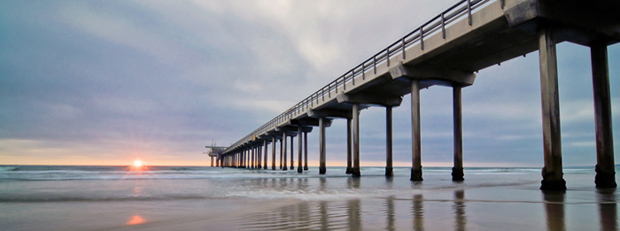
By:
- Shannon Casey
Published Date
By:
- Shannon Casey
Share This:
Many Reasons for Optimism at Scripps Institution of Oceanography as It Moves Deeper into Second Century of Discovery

Erik Jepsen/UC San Diego Publications
For more than a century, Scripps Institution of Oceanography has been on the leading edge of ocean, atmospheric, and earth science. And academia. The creative drive of forward-thinking Scripps leaders led to the establishment of UC San Diego more than 50 years ago.
Today, it takes a talented team of people to keep Scripps Institution of Oceanography vital.
Scripps hiring and research continue to thrive as the institution commences an exciting new era of important research on the natural world and its impacts on the community. More early-career scientists have joined Scripps both as assistant professors and through the Institutional Postdoctoral Program, supported this year by Sempra Energy, which also funded the new “Boundless Energy” exhibit at Birch Aquarium at Scripps.
Expressing his commitment to the next generation of research leaders, Scripps Director Tony Haymet said, “as the institution moves deeper into its second century of discovery, we will continue to put energy and focus toward building our ranks of talented people.”
Scripps science and education programs are on sound and innovative paths. Thanks to creative research being spearheaded by Scripps’ first-rate scientists and students, Scripps had another extremely productive 2010-11 fiscal year, and its focus on the future looks bright.
In addition, faculty awards and honors continue to be inspiring. David Sandwell, Scripps professor of geophysics, became the latest to join 12 other living Scripps scientists named to the National Academy of Sciences. John Orcutt, distinguished professor at Scripps and principal investigator of the Calit2-based cyberinfrastructure component of the national Ocean Observatories Initiative, became the second living Scripps scientist named to the National Academy of Engineering. Both scientists were honored for their outstanding work in geophysics.
This year, Scripps implemented the plan to revitalize the campus physical plant, modernizing labs and refreshing buildings in response to the exciting growth in new talent. World-class people need world-class facilities, and as Scripps continues to attract the best-of-the-best, institutional leadership will make a priority of providing the space they need to conduct their current and future world-class research.
Scripps also made significant strides in securing private gifts, raising more than $7 million in philanthropic funds thanks to the support of many generous individuals and foundations. In recent years, the importance of private philanthropy in supporting institutional priorities at Scripps has transitioned from “icing on the cake” to absolutely vital.
Collaborating with high-profile ventures such as the America’s Cup World Series on San Diego Bay last month provides opportunities for Scripps to educate a curious public about the local oceans and research projects such as the Scripps-based Coastal Data Information Program (CDIP). The CDIP program, along with the sophisticated wave and wind forecast systems of the Southern California Coastal Ocean Observing System, provide valuable, real-time data daily to users of the oceans and coasts.
“Today, and looking ahead, we are extremely grateful to our friends and supporters who continue to step up and invest in Scripps’ promising future,” said Haymet. “With their ongoing support, I see many reasons for optimism today, and far into the future.”
Share This:
You May Also Like
Stay in the Know
Keep up with all the latest from UC San Diego. Subscribe to the newsletter today.


